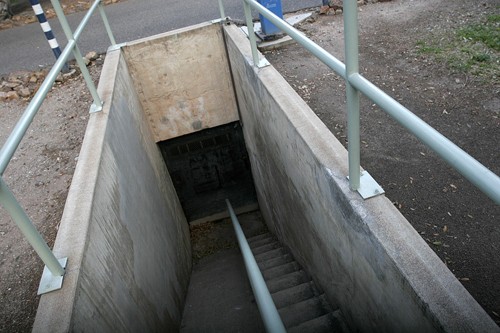Rumor has it they were built as Cold War era bomb shelters, that they housed a lost monkey and that ghosts continue to roam their concrete caverns. Unfortunately for thrill seekers, the rumors of underground tunnels at the University of Arizona are, well, rumors.
Gordon Bush, a senior staff technician for UA facilities management, said he has heard all of the rumors about the campus’s fabled underground tunnel system, but the tunnels’ actual purpose might be just as impressive.
Construction on the tunnels began in the 1930s as a way to provide steam to campus buildings from a centralized location, Bush said. The idea of using tunnels as a form of centralized heating was revolutionary at the time.
Today, each of the UA’s 140 buildings are connected by 5.3 miles of underground tunnels that deliver such essentials as water, electrical power, telecommunications equipment and steam, Bush said.
Mention underground tunnels to current students at the UA, and they may be a little puzzled. But to an earlier generation, this underground world served as a forbidden jungle to Tucson’s adolescent population.
During the 1980s, students would sneak into the tunnels late at night to play a game called Dungeons and Dragons, Bush said. During 1940s, ‘50s and ‘60s boys would use them to sneak into the girl’s dormitories.
The claim that the campus tunnels were built as bomb shelters is also fiction, Bush said.
“”When I came to work at the university in the 1970s, there were several of the basements of the buildings that had provisions and water and that kind of stuff, but the tunnels were really never a part of that,”” he said.
Until several years ago students could take tours of the tunnel system, but Bush said security and safety concerns have lead the tunnels to be sealed from visitors.
That does not mean there are not ways to get in.
It is possible that some students have keys that disappeared in the past. He said, in addition to the entrances in every building, there are also exposed descending stairwells outside the Emil W. Haury Anthropology building and Gila Residence Hall.
But security is tight, Bush said, and even if someone were to get into a tunnel, motion sensors would sniff him out before long.
People are always fascinated by what they do not understand, he said.
“”There is nothing really secret about them,”” Bush said. “”The steam pipes creak and grown and moan and stuff like that, so (people said) they are haunted.””
James Knigh, acting department head of agriculture education, who previously taught the course Heritage and Traditions of the UA, said people should believe what they want, but many of the stories associated with the tunnels are simply rumors.
“”It is kind of like the ghosts that walk a few of our campus offices,”” Knight said. “”It is just not true.””
Bush said the one legend he is unsure about is whether a monkey escaped from a lab and managed to live in the tunnels for several days.
“”There have been cats that get in there — we call them tunnel pumas — but there is nothing for them to eat. The mice and bugs don’t even like to live there,”” he said.
There is one current resident, however. Bush said a ground squirrel lives in a portion of tunnel that connects the Mathematics building to the central heating and cooling station located about 100 feet northeast of the building.
“”He will scare you to death. You are walking down there, and then the squirrel goes running down the hall,”” he said. “”Every time he scares somebody, they want to kill him, but they actually feed him.””
Bush, 63, has not always been so skeptical of the tunnel rumors. As a child he used to sneak down and play in the tunnels, blocks from his home on the corner of First Street and Park Avenue.
“”Mostly we were just scared and watching for the workers because back then they would throw rocks at you,”” he said. “”It was just creepy and scary and dark. We didn’t even know what steam was, so when you would hear the traps work and stuff like that, you would (think it was haunted).””
Pretty much anywhere you go at the UA, there are tunnels below your feet. They can be small enough that you have to crawl (such as one that leads in to Old Main) or they may be large enough to drive a truck through (like one that runs under Speedway Boulevard), a mere five feet below, or more than 20 feet underground, Bush said. The tunnels even influence how campus landmarks are constructed.
“”There is a canyon in the Student Union,”” Bush said. “”Now they have turned that into a really neat thing, but the reason that is, is because a tunnel goes right there and they could not build on top of it because there was an old 1930s tunnel.””
While mystery draws many to the tunnels, others revere them as engineering marvels.
“”We heat and cool campus buildings for about half of what a normal resident would. It is a very, very effective system, and we are kind of one of the leaders in the world,”” Bush said. “”People have come from China to look at our system, so it is a real showplace.””
Bush said no matter your reason for visiting the tunnels, it is not a place you would want to stay for long.
“”There’s sharp things, there’s hot things, there are things that bang your head,”” he said. “”It is not a fun place.””









